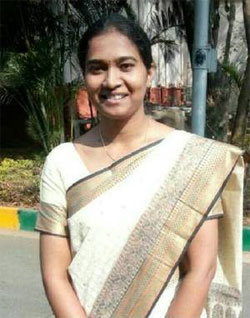UPSC 2016 Topper Nandini KR scored 55.3% Marks
 Tough standards adopted by the Union Public Service
Commission (UPSC) in conducting the civil services exam has meant that topper
Nandini K R has managed to secure only 55.3%.
Tough standards adopted by the Union Public Service
Commission (UPSC) in conducting the civil services exam has meant that topper
Nandini K R has managed to secure only 55.3%.
The marks of the successful candidates of the civil services
examination 2016 have been disclosed by the Union Public Service Commission (UPSC).
The examination is conducted annually in three stages --
preliminary, main and interview -- to select candidates for the Indian
Administrative Service (IAS), Indian Foreign Service (IFS) and Indian Police
Service (IPS), among others.
Nandini, an officer of Indian Revenue Service (Customs and
Central Excise), has topped the examination, the result of which was declared on
May 31.\
She got 1,120 marks (927 in main and 193 in interview) out of
2,025, taking her percentage to 55.3.
Second rank achiever Anmol Sher Singh Bedi got 1,105 marks
(54.56%) and third rank holder Gopalakrishna Ronanki secured 1,101 marks
(54.37%), the UPSC said.
Civil services topper of 2015, Tina Dabi, had got 1,063 marks
(52.49%).
A total of 1,099 candidates (846 men and 253 women),
including 500 in general category, 347 belonging to Other Backward Class, 163
from Scheduled Caste and 89 from Scheduled Tribe, have been recommended for
appointment to various Central government services on the basis of the 2016
civil services exam results.
Read More....
Courtesy: Hindustan Times